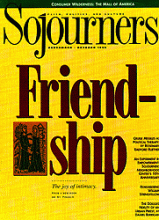After years of supporting Levi Strauss & Co. with their labor, 1,150 seamstresses in San Antonio were laid off when the corporation left in 1990 for Costa Rica, where wages are lower and labor laws less stringent. In response, the garment workers--the majority of whom are Latina women--formed the group Fuerza Unida (United Force) to lead a boycott against the world's largest garment producer.
The closing of Levi's Zarzamorga San Antonio plant, which produced the "Dockers" line of clothing, left the seamstresses--many of whom had worked at the plant for their entire adult lives--without incomes, insurance, or employment options, and sent a ripple of hardship throughout the community. Families lost their homes and cars, had their utilities cut off, and experienced other domestic stresses related to unemployment, including divorce and depression. Levi Strauss & Co., on the other hand, posted a record $272.3 million in profits the year before the closing, much of it based on the success of the "Dockers" the women produced.
In addition to the boycott of Levi's products being led by the women of Fuerza Unida, they continue their struggle for fair compensation, retraining, corporate responsibility, and their pensions that disappeared with the Levi's plant. This past spring they organized a community tribunal and direct action at the Levi's headquarters in San Francisco. They have also opened a workers' assistance center in San Antonio to train other workers to recognize the early warning signs that a corporation is preparing to leave or shut down. "Our goal is to make an example of Levi's so that no other corporation will do what they did," said a Fuerza Unida spokesperson.
Read the Full Article

